85 Speakers from 20 Countries across 2 Days


85 Speakers from 20 Countries across 2 Days






The Australasian Packaging Conference took place from 6–7 May at the Sofitel Wentworth in Sydney, bringing together packaging professionals from across the globe. This year’s theme, Reimagine Packaging Design, set the tone for two days of forward-thinking dialogue, with 85 speakers from 20 countries sharing insights, strategies and innovations.
The atmosphere was one of optimism, with a shared sense that the industry is moving in the right direction, driven by the right mindsets to enable meaningful change in packaging and the circular economy.
Opening the conference, John Bigley, president of the Australasian Institute of Packaging (AIP), set a collaborative tone, “The theme of the conference is reimagine packaging design. If each one of us in the room goes away with two or three new ideas or approaches, that's close to 1000 potential actions to improve the packaging world in which we live.”
The first keynote session explored the foundational principles required to achieve a truly circular economy in packaging design, with a panel of experts bringing global and local perspectives to the conversation.
Pippa Corry, founder and director of Philo & Co, emphasised the critical role design plays in eliminating waste at the source. “Waste is a design flaw,” she said, highlighting how circular design must prioritise rethinking the role of packaging altogether before considering reuse, refill, and ultimately recyclability. Corry pointed to the need for systems thinking, lifecycle thinking and human-centred design to drive better outcomes across the packaging value chain.
Belinda Chellingworth, director and principal consultant at BC Consulting, echoed this, presenting a simplified “R-ladder” framework—rethink, reduce, reuse, recycle— as a practical approach for packaging professionals. “Our first response should always be to go to the top of the ladder,” she said, underscoring the importance of reducing material use at the design stage to preserve resources and extend the life of packaging.
Nicole Garofano, head of circular economy development at Planet Ark, added that getting the design right from the outset is essential not only to enable recovery at end-of-life but also to de-risk the supply chain. “If we don’t design from the very beginning, we’ve already limited the package’s life,” she said.

From a global standpoint, Luciana Pellegrino, president of the World Packaging Organisation (WPO), and Nerida Kelton, WPO vice president sustainability & save food, addressed the diversity of design and infrastructure challenges across countries. Kelton used a jigsaw puzzle metaphor to illustrate the need for flexible, context-specific approaches to sustainability. “What we need to do is encourage countries, through the WPO, to take the pieces of the puzzle that are appropriate and suitable today,” she said. “Rather than judging them because they design differently, we should allow them to consider their communities, infrastructure and capabilities, and select the pieces that work best for them."
Sustainability through the lends of multinational brands & retailers
The second keynote session brought together packaging leaders from global brands and major retailers to share their strategies for advancing sustainability, addressing regulatory challenges, and meeting evolving consumer expectations.
Alistair Sayers, senior general manager of global technical strategy planning & development at Suntory Holdings, outlined the company’s push to cut Scope 3 emissions by driving sustainable PET innovations. In Japan, he noted, only 32 per cent of PET bottles are currently recycled bottle-to-bottle, with the remainder still reliant on virgin plastic. With the EU targeting 10 per cent reuse by 2030 and 40 per cent by 2040, Suntory is exploring enzyme-based decolorisation and addressing challenges in reuse systems, such as bottle durability and transport logistics, to support long-term CO2 reductions.
Alberto Peixeiro, the R&D Packaging Director at The Arnott’s Group, detailed the company’s $300 million, five-year investment in its domestic manufacturing footprint which includes the establishment of two new sites and initiatives aimed at advancing the company's sustainability agenda. Aiming for 100 per cent recyclable packaging, Peixeiro acknowledged obstacles including cost pressures and production disruptions. By reducing packaging specifications from 25 to 14, the company achieved $2 million in capital savings and $1 million in R&D. He stressed the importance of technical capability, a mindset shift, and strong industry partnerships. A key initiative involved trialling fully post-consumer recycled (PCR) content for long-shelf-life products, an ambitious project Peixeiro estimated had a 50 per cent success rate.

Bryan McKay, head of packaging at Woolworths Group, didn’t mince words about the stakes. “The packaging regulatory landscape will change, and industries must keep driving towards 2025 targets and actively participate in the 2030 roadmap,” he stated. Looking at the bigger picture, he pointed out a sobering fact: “About 40 per cent of plastic waste originates from packaging, and around 8 million tonnes end up in the ocean every year. That is not something we can be proud of, and it’s something we must collectively fix.”
State of Industry for Fibre & Paper: Deforestation, Pulpability, Recycled vs Virgin
The third keynote panel explored the shifting landscape of fibre-based packaging, addressing recyclability, regulatory clarity, and the challenges faced by smaller industry players.
Craig Brown, managing director of Sappi Trading Australia, stressed the need for recyclability while recognising its limitations. “Every time you recycle fibre, it weakens the material,” he explained. “Recycled content can work for some packaging, but not all— particularly when it comes to direct food contact.” He also highlighted the difficulties in testing for recyclability and keeping up with evolving standards.
Will Killinger, general manager for Australia & NZ at UPM, the Biofore Company & Raflatac, pointed to the need for stable and reliable guidelines. “If we don’t trust the guidelines, legislation or the targets, and they keep changing, it creates a disenfranchised industry,” he said. “That leads to a fragmented and self-serving approach, which ultimately undermines what we’re trying to achieve collectively.”


Kellie Northwood, CEO of the Visual Media Association, drew attention to the knowledge gap facing small and medium-sized packaging manufacturers. While large businesses are typically well-informed and supported, smaller operators risk being left behind.
“There is absolutely a gap,” she said, highlighting the importance of collaboration across mills, distributors and industry associations. “Without broader education and engagement, we risk creating a divide that could slow the industry’s progress toward circularity."
The missing consumer-facing design element: Accessible & Inclusive Packaging Design
This session challenged the industry to rethink how packaging can better serve consumers with disabilities, urging a shift from compliance to inclusive design. The session featured Alexandra Brayshaw Dip.Pkg.Tech. MAIP, accessible design manager at Arthritis Australia; Storm Menzies, founder of ByStorm Beauty; and Liza Vernalls MAIP, packaging innovation manager at Yates Group.

Storm Menzies led an interactive segment, equipping audience members with simulation gloves that mimicked reduced fine motor skills and grip strength. Participants struggled to open common packaging formats, demonstrating firsthand the frustration and limitations inaccessible design can cause. The exercise underscored how such barriers can directly influence brand loyalty and repurchase behaviour.
Alexandra Brayshaw reinforced the point, stating, “Designing packaging should avoid being a barrier to simple tasks like making a meal, which can have long-term impacts on mental health.” She emphasised the importance of designing based on research and real consumer feedback, rather than assumptions. Menzies also shared her personal motivation behind launching ByStorm, a brand aimed at serving over 700 million women worldwide with disabilities. “Less than four per cent of personal care products are accessible, despite 16 per cent of the global population experiencing some form of disability,” she said, calling on the packaging industry to lead change in the beauty sector and beyond.
The session left attendees with a clear message: inclusive design is not optional, it’s essential for a truly consumer-centred packaging strategy.
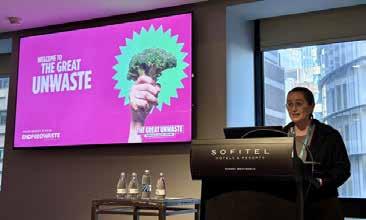

This session brought to light the role packaging can play in reducing household food waste through thoughtful design and clearer communication.
Ella Winnall, campaign manager at End Food Waste Australia, introduced the National Consumer Campaign, Australia’s first national behaviour change initiative focused on household food waste avoidance. The campaign positions packaging as a proactive tool, incorporating features like portion guidance and onpack recipes to help consumers minimise waste. “Plan for the unplanned,” Winnall urged, encouraging Australians to make small but meaningful changes in daily habits.
Brian Rodrigo Llagas, a PhD candidate at RMIT University’s School of Media and Communications, presented research from a national project on data labelling and storage advice. His findings highlighted a widespread lack of consumer understanding around date labels on food packaging. “Up to 82 per cent of consumers do not understand best before date labels, and 62 per cent are confused by use by date labels,” he said.
The discussion underscored the power of packaging not just as a protective tool but as a behavioural cue. It reinforced that industry-wide efforts—from material selection to the clarity of on-pack messaging—play a vital role in helping consumers reduce waste at home.




Thank you for curating such a high-quality event that brought together industry pioneers and rising experts.
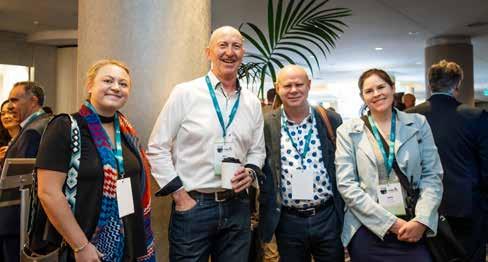
is our packaging community in action .

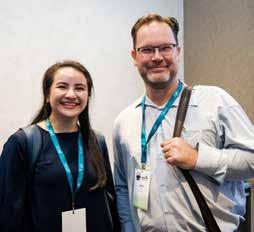

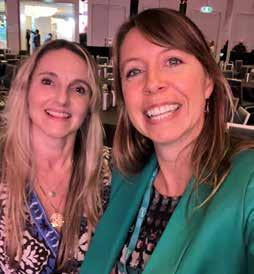



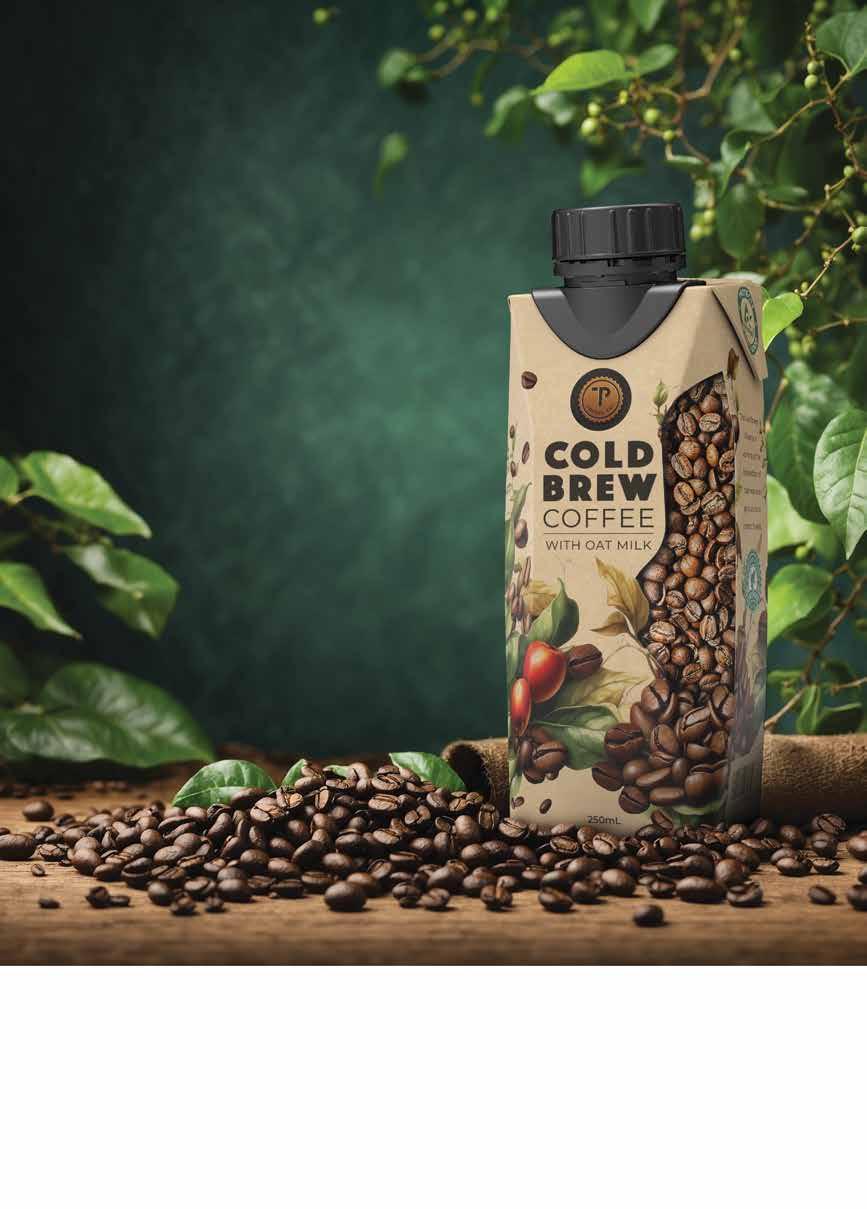


















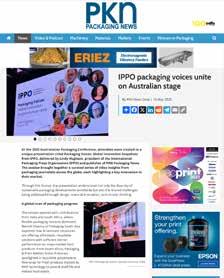











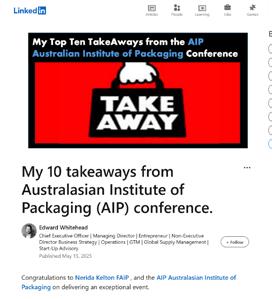

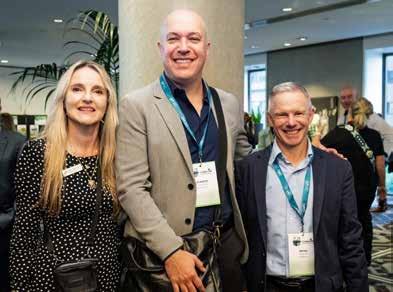


Thank you for championing researchers and creating a space for genuine engagement with industry.

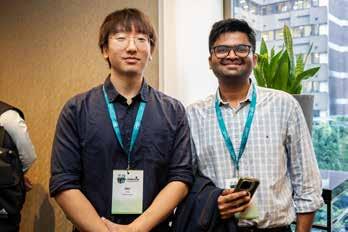

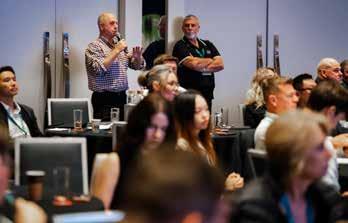


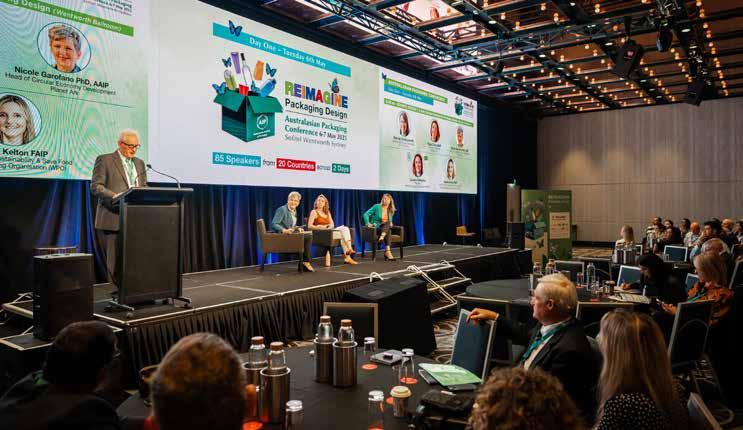












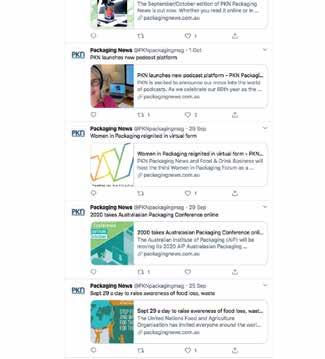





Shifting design mindsets and aligning packaging with consumer behaviour and sustainability goals were central themes in the 'Future of Sustainable Packaging Design: Shifting design mindsets' session at the Australian Packaging Conference.
Moderated by Ben McCulloch, product manager (rPET) at Martogg, the panel featured Kitty Sandoval, senior packaging manager at Suntory Oceania; Kelly Taylor, business development manager - Aldi ,TrendPac; and Brent Vrdoljak, founder of creative agency Mind Control.
Sandoval introduced the Japanese concept of Seikatsusha, a philosophy that views people not just as consumers, but as individuals with full, complex lives. This approach, she explained, guides Suntory’s packaging strategy by focusing on lifestyle alignment and emotional connection. She cited the redesign of Lucozade’s packaging as an example: shifting from a full plastic sleeve to a half-sleeve allowed for better recyclability while maintaining brand recognition.
Taylor spoke about TrendPac's development of Aldi’s “Green Action Bottle” and the challenges of sustainable redesign, including concerns about product recognisability and shelf presence. The final outcome delivered a 25 per cent weight reduction and is made from 100 per cent recycled PET (rPET). “Environmental goals are essential, but they must be balanced with brand identity and consumer habits,” she said. Vrdoljak focused on behavioural design and how shoppers perceive sustainability. He opened with the quote, “people buy value, not values,” and challenged the audience to consider what sustainability looks like to consumers. He talked about both failed and successful packaging redesigns, including Earth Choice’s transition to a refillable aluminium bottle and pouch system.
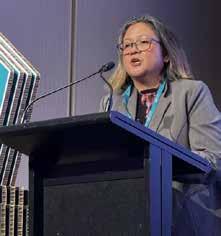

“People shop by colour,” he said, noting that even well-intentioned changes can lead to a loss in sales if they disrupt familiar visual cues. He concluded with saying “Slow change is effective, take baby steps.”
The session reinforced the need for a careful, consumerfocused approach to sustainable packaging – balancing technical innovation with real-world behaviour and thoughtful design.


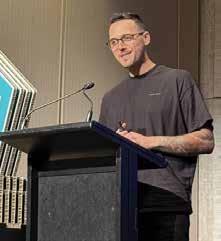

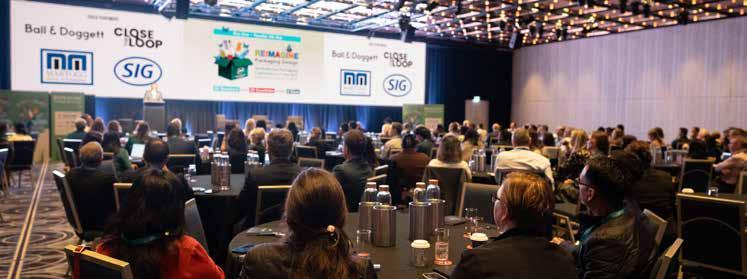

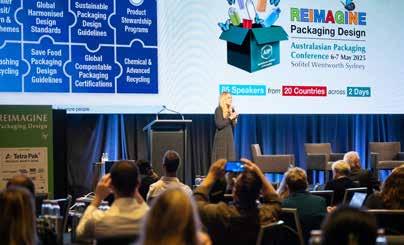

What a year to attend my first AIP conference! Grounding us in Circular economy thinking early, the conference focussed on reimagining packaging design – an apt theme seeing as a sustainable way forward needs to look different.
The most inclusive conference I have ever attended

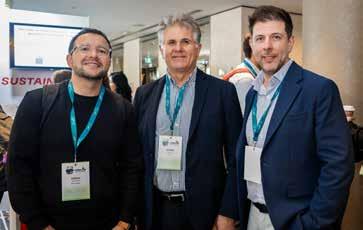

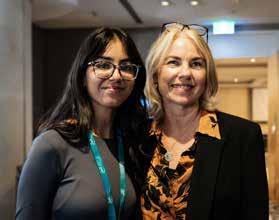


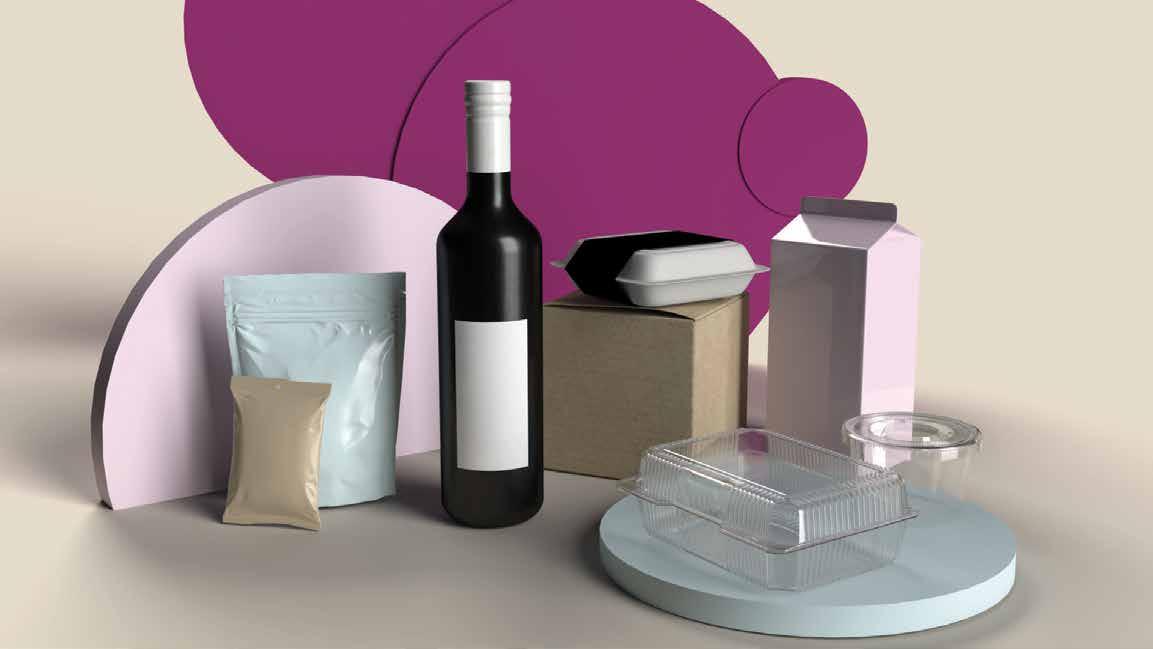

In a regulatory update at the Australasian Packaging Conference, Australian Packaging Covenant Organisation (APCO) CEO Chris Foley laid out the evolving national packaging policy landscape, signalling imminent reforms that will embed extended producer responsibility and ecomodulated fees into Australia’s packaging system.
A shift to accountability
Delivering a timely regulatory update at the conference, Foley painted a picture of an evolving framework for packaging regulation, as the nation moves towards a harmonised extended producer responsibility (EPR) system.
With political certainty returning following the federal election, Foley indicated the government’s preChristmas agenda on packaging reform would now accelerate. “If you’ve been hoping for a reset or a slowdown, I wouldn’t be expecting it,” he cautioned, adding that a sharper focus from government will follow once a new minister is confirmed.
Describing the current landscape as a “neat,full, jigsaw box with lots of moving parts,” Foley acknowledged that while some aspects of the national packaging system are functioning well, gaps remain. These include misalignment between state, territory and federal regulations, insufficient clarity on design standards, and a shortfall in investment across the recycling value chain.
Extended producer responsibility gains momentum
A centrepiece of the reform agenda is the implementation of an industry-led EPR scheme. According to Foley, 84 per cent of APCO’s members have indicated their support for EPR. The challenge now lies in bringing it to life in a practical, equitable way.
A phased approach is expected, with larger businesses likely to fall under the initial scope. “The bigger you are, the more likely you are to be in Phase One,” Foley said, noting that consultation is ongoing to determine appropriate thresholds.
The move will be guided by APCO’s post-2030 strategy, which builds on the transitional roadmap presented in August 2024. This strategy identifies three key levers for change:

Chris Foley
1. Service payments – the evolution of EPR fees into eco-modulated payments that reward better design and recyclability.
2. Consumer education – a coordinated, multiyear plan to lift awareness and improve correct recycling behaviours.
3. Supply chain facilitation – addressing niche and difficult-to-recycle materials through targeted collaboration.
A significant change under the proposed EPR scheme will be the introduction of eco-modulated fees by 2027. These fees, adjusted based on the environmental performance of packaging, aim to incentivise improved design and material selection.
Foley clarified that the funds collected won’t be distributed through grants or used to acquire assets. Instead, they will be reinvested via “service contracts” to support infrastructure across the recycling value chain – from collection and sorting through to reprocessing. “We’re not here to compete with entrepreneurs. We want to facilitate and grow the system,” he emphasised.
He also acknowledged a critical gap in downstream investment. “Collectors, sorters, reprocessors – they won’t invest unless there’s something in it for them. We have to bridge that.”
Consumer education and system trust
Foley noted that while design for recyclability has progressed, 70 per cent of rigid plastics collected at kerbside still go to landfill, often due to consumer confusion, not technical limitations. “The infrastructure is there, the systems are there, but the consumer doesn’t understand,” he said.
To address this, APCO is advocating for a national, multi-year education roadmap that goes beyond short-term campaigns. This includes exploring schoolbased education and aligning messaging across jurisdictions. “We’ve invested so much in redesigning packaging, but we’re missing the final front end – the consumer and the household. We owe it to ourselves to fix that,” Foley said.
Tailoring reform to business size
Acknowledging concerns from the floor about fairness and the impact on SMEs, Foley confirmed that a tiered implementation is on the table. “We’re baking assumptions into the consultation paper about
thresholds – whether that’s $50 million, $100 million, or more. But we need feedback from members to guide where that line should be drawn,” he said.
He added that part of APCO’s role as a co-regulator is to develop tools and resources to bring the wider system up to speed in a staged and supportive way.
Looking ahead
In closing, Foley underscored that while the regulatory framework is still being finalised, its direction is clear: national alignment, deeper brand owner responsibility, and a system that rewards circular design and sustainable outcomes.
With consultations closing imminently and strategy implementation looming, brand owners, suppliers, and the broader packaging value chain are urged to stay engaged.
“We know enough to know where the reforms are going. Now, it’s about how we bring it to life.”





The conversations, the case studies, the emerging innovations have left me inspired and energised to bring the learnings into my work.
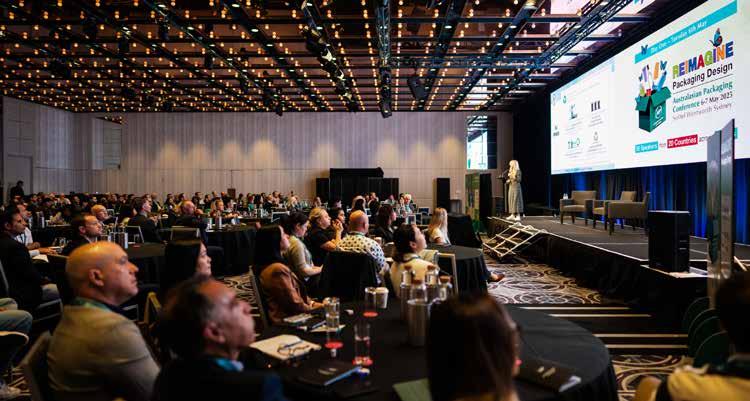
What a great conference – I can honestly say it was the best one I have been to.



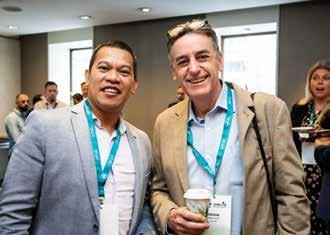


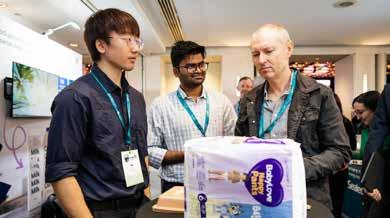






The conference was truly impressive, featuring insightful lectures and panels and an exciting evening of the PIDA awards.
At the Australasian Packaging Conference, Pact Group NZ executive general manager Deanne Holdsworth offered a frank and insightful look at the real-world challenges in achieving plastic circularity. Drawing from Pact’s trans-Tasman experience, Holdsworth explored both the wins and the sticking points for a packaging industry striving to close the loop.
Holdsworth (who is a finalist in PKN 2025 Women in Packaging awards in the Sustainability Leader category) opened by outlining Pact’s broad operational footprint – spanning 15 countries and four divisions covering packaging, reuse, recycling and contract manufacturing – describing it as a “circular model brought to life”.
She focused her presentation on two key challenges: consumer trust in recycling systems, and the fragmentation of stewardship schemes.
The first was illustrated with a case study from New Zealand. A decade ago, Pact set an ambitious goal to transition to a tray-to-tray recycling system for protein packaging. That meant rethinking materials, shifting away from foam trays to clear PET, building technical capability, and forging partnerships across the value chain. Today, PET trays represent 30% of kerbside PET collections in New Zealand – a marked improvement from 10 years ago.
But replicating that success in Australia remains elusive. “We’ve done the hard work,” Holdsworth said, “but it doesn’t work unless consumers are on board.” She recounted a recent flight where fellow passengers lamented plastic waste, unaware of the existing recycling systems in place. It underlined a critical gap: consumer perception and understanding.
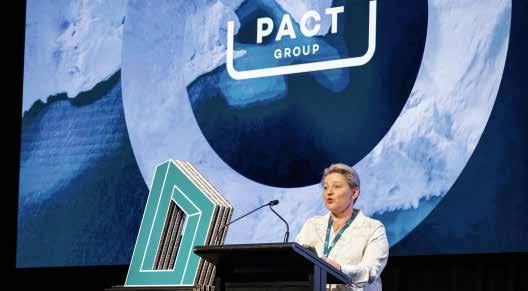
Holdsworth argued for multi-layered communication to rebuild trust and drive behaviour change. “The message needs to come from everywhere – industry, government, brands, retailers, educators, even TikTok and Insta.”
The second issue she tackled was the operational complexity caused by multiple, often voluntary, stewardship schemes. While Pact is involved in several successful programs in New Zealand – from silage wrap collection to paint pail recycling – she cautioned that fragmented schemes risk confusing consumers and increasing costs for manufacturers.
“Standardisation offers consistency, shared infrastructure and reduced complexity,” she said. “But there’s still value in targeted schemes where gaps exist. The challenge is finding the balance.”
Holdsworth concluded with a call for a coordinated national approach that unites standardisation with selective stewardship. “Can we create an efficient, effective recycling framework that works for consumers, brand owners and the environment? That’s the challenge



Thank you to the impeccable team for such a wonderful event.


Over two days of indepth discussion and idea-sharing, connection and collaboration, we had the privilege of hearing from industry experts and thought leaders on the challenges and opportunities shaping the future of packaging.



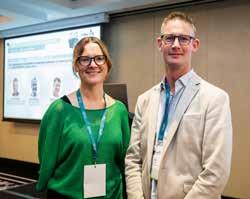




The sessions were engaging, the topics spot on and the conversations meaningful. The PIDA awards was a real stand out – an excellent way to celebrate innovation and hard work happening across the industry.


I am still energised from my very first (and definitely not my last!) Australasian Packaging Conference. It was great to see the industry come together to share ideas and explore new ways to collaborate..
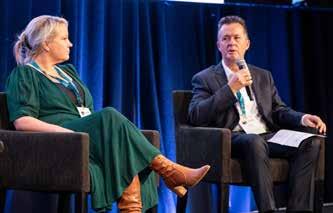

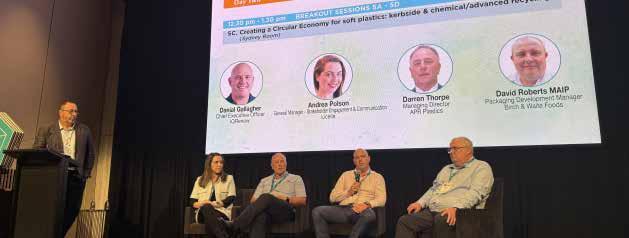
At the Australasian Packaging Conference, a breakout session led by Barry Cosier, co-CEO of Soft Plastic Stewardship Australia (SPSA), brought together voices from across the packaging supply chain to tackle one of the sector’s most pressing challenges: how to create a viable circular economy for soft plastics.
Cosier opened the session by acknowledging the hard lessons learned from the failure of the REDcycle program, emphasising the need to keep all “four legs of the chair” – collection, recycling capacity, end markets, and funding – in balance. He made clear that SPSA’s approach would avoid the pitfalls of overpromising without the infrastructure or market support to deliver, stressing that collection must be matched by real downstream processing and offtake capacity.
Packaging in practice
David Roberts, packaging development manager at Birch & Waite, brought a brand owner’s perspective to the session. Operating as the company’s sole packaging resource, Roberts described the practical difficulties of transitioning to recycling-ready films on legacy machinery.
Running high-barrier sachets on heat-intensive, highspeed lines not designed for modern mono-material structures has caused functionality and yield issues. Melting, jamming, and excess waste were frequent challenges.
“You’ve got to make these materials work on machines never designed for them,” Roberts said. While praising tools like the PREP tool and CEFLEX guidelines, he stressed the need for standardisation and consistent specifications across the industry.

Daniel Gallagher, CEO of iQRenew, focused on the company’s investment in Australia’s first purpose-built soft plastic recycling facility, located in Taree, NSW. The SPEC processing plant – short for 'Soft Plastic Engineered Commodity' – is already operating at scale, processing around 40 tonnes of post-consumer soft plastics daily.
Gallagher said the facility could absorb the national collection volume formerly managed by REDcycle, offering a crucial “missing link” in infrastructure.
He underscored the importance of traceability, noting iQRenew’s use of QR-coded bags to confirm source and destination of recovered materials. SPEC products such as flakes and pellets are already being used in fence posts, flexible films, and non-food grade packaging components.
“The infrastructure is here – we just need strong offtake markets and procurement from industry to keep it viable,” Gallagher urged.

Darren Thorpe, managing director of APR Plastics, detailed the company’s journey toward launching Australia’s first commercial-scale chemical recycling facility for soft plastics. Operating on a pyrolysis-based model, the plant aims to process 3,500 tonnes annually starting in September, with long-term ambitions of scaling to 100 tonnes per day by 2028.
Thorpe pointed out that while mechanical recycling will always have a role, chemical recycling is essential for dealing with contaminated, multi-layered films not suited to mechanical processes.
“We want plastic back to plastic. This material is fit for purpose, and our goal is to make it circular,” he said.
Importantly, APR secured regulatory support from the EPA to classify pyrolysis-derived outputs as resources rather than waste – a key breakthrough for industry acceptance. Thorpe acknowledged the challenge of securing consistent feedstock and restoring community trust post-REDcycle, noting the need for clear collection systems and council engagement.
Andrea Polson, stakeholder engagement lead at Licella, presented the company’s proprietary chemical recycling technology, hydrothermal liquefaction (HTL), as an efficient and scalable solution. Unlike pyrolysis, HTL uses superheated water under pressure as the reactive agent, offering energy and emissions advantages.
Licella’s technology, proven at pilot scale in Australia, has already been licensed internationally to partners in the UK, South Korea, and Japan. In Australia, the company’s proposed Altona facility has EPA approvals and is awaiting final investment decisions. Polson noted that HTL can process mixed, post-consumer, multi-layered soft plastics into oil intermediates used to make circular plastics.
However, she stressed that for chemical recycling to scale, it needs consistent feedstock and certainty from packaging regulations. “Designing for recyclability –whether mechanical or chemical – is essential to make these facilities viable. It's a systems approach requiring shared cost, risk, and reward,” she said.
The session concluded with a panel discussion that cemented key themes emerging from the presentations:
1) Infrastructure is ready: Facilities for both advanced mechanical and chemical recycling are operational or imminent.
2) Feedstock consistency is critical: To operate at scale, recycling plants need clean, predictable input streams – something that relies heavily on packaging design and effective collection systems.
3) Offtake demand must grow: Without strong demand for recycled outputs, particularly from brand owners and manufacturers, the system will stall.
4) Collaboration is essential: No one company or technology can solve the problem alone. Cross-sector collaboration – from brands to recyclers to regulators – is the only path forward.
As Gallagher concluded, “If we keep going at our current rate, we’ll run out of legacy post-consumer soft plastic feedstock by December.”
The message from the panel was clear: the time to act is now, and the pieces are in place to finally close the loop on soft plastics in Australia.


Well done to you and the AIP team – everything ran smoothly and the team was very professional.
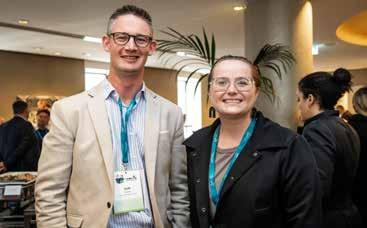

This was my first packaging conference and thank you for bringing such a diverse group of minds together, for enabling the thought-provoking sessions and conversations, and for such an inclusive event.

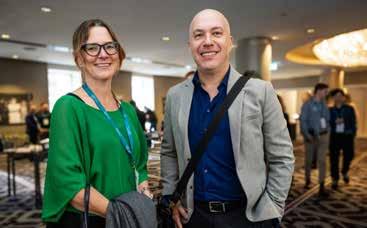


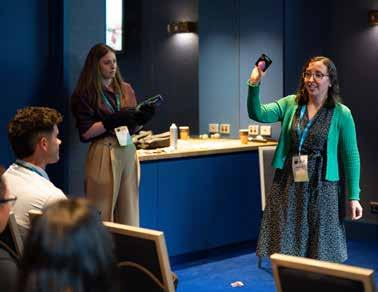
It has been a privilege to meet so many innovators and leaders in the constantly evolving global packaging space at the AIP conference.



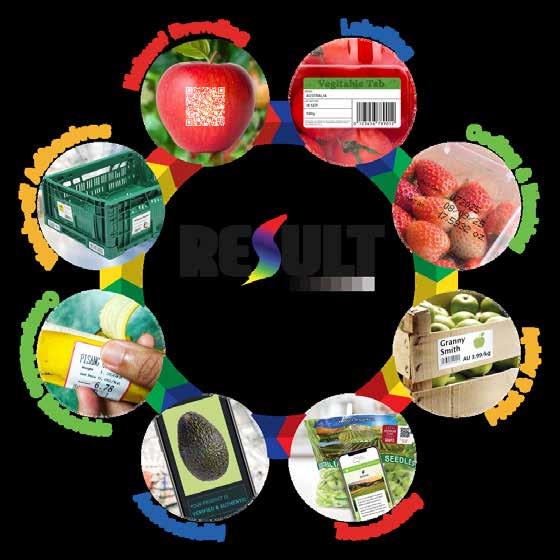

At the 2025 Australasian Packaging Conference, attendees were treated to a unique presentation titled Packaging Voices: Global Innovation Snapshots from IPPO, delivered by Lindy Hughson, president of the International Packaging Press Organisation (IPPO) and publisher of PKN Packaging News. The session brought together a curated series of video insights from packaging journalists across the globe, each highlighting a key innovation in their market.
Through this format, the presentation underscored not only the diversity of sustainable packaging developments worldwide but also the shared challenges being addressed through design, material innovation, and circular thinking.
The session opened with contributions from India and South Africa, where flexible packaging remains dominant. Naresh Khanna of Packaging South Asia explored how bi-laminate structures are offering affordable, recyclable solutions with sufficient barrier performance for mass-market food products. From South Africa, Packaging & Print Media’s Anton Pretorius spotlighted a recyclable polyethylene flow wrap for fresh produce, backed by MAP technology to extend shelf life and reduce food waste.
In the fibre-based space, Packaging Digest’s Lisa Pierce reported on battery brands transitioning to all-paper packaging, aligning sustainability with shelf appeal and merchandising functionality. Adding to this was Pack News Sweden’s Bo Wallteg, who shared developments from Paboco’s paper bottle project and Blue Ocean Closure’s recyclable fibre caps – innovations now gaining traction in the Australian market too.
To highlight local efforts, Hughson presented Australia’s own entry into the paper bottle arena through Zipform Packaging, recently covered in PKN. The shift to ecommerce and right-sized packaging was represented by Cory Connors (USA), known for his work across social media and the Sustainable Packaging Podcast, who discussed paper roll packaging that can be adapted to product size, reducing excess material.

Fellow American Adam Peek highlighted carbon offset initiatives like Print Relief, which uses tree planting to mitigate packaging’s environmental impact – with parallels to Australia’s Impact International forest program.
Driving reuse and recycling innovation
As reuse systems gain traction, Erik Kruisselbrink (Netherlands) presented a returnable tray system influenced by Europe’s PPWR, while Dominique Huret (Belgium) shared a reusable personal care packaging initiative driven by France’s SUP Directive. Both examples reflect the regulatory pressure and infrastructure focus needed to scale such systems.

Recycling efforts were covered by Turkey’s Aslihan Arikan, who showcased collaborative innovation between industry and academia. Her message echoed initiatives heard at the conference, including work by Australian researchers Dr Ruby Chan and Mel Nguyen. final contribution came from Brazil’s Liliam Benzi, who brought a designer’s lens to the fore with packaging inspired by architecture – a reminder of the emotional and aesthetic value packaging can deliver alongside sustainability.
Closing the session, Hughson encouraged attendees to connect with any of the featured IPPO journalists to deepen knowledge exchange across markets. “Let’s keep doing the work, and sharing the knowledge, so that we can make informed decisions and unite as we strive towards packaging circularity,” she concluded.






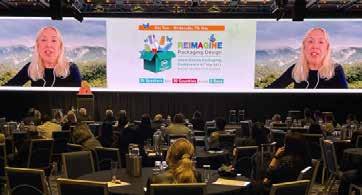
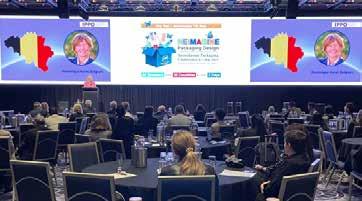




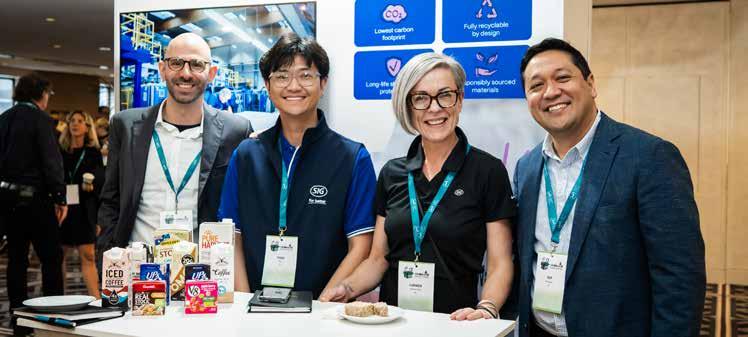



The place was buzzing, and I loved connecting with new and old contacts and left feeling very inspired. Everyone I spoke to said how good the event was in terms of format, speakers, and connection.


This year’s conference made it clear: the packaging industry isn’t waiting — it’s redesigning the future with urgency, creativity, and collaboration.
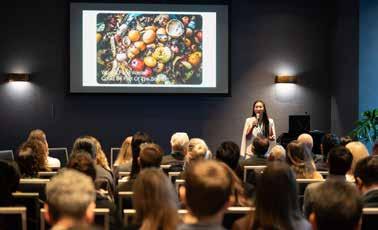


At the Australasian Packaging Conference, run by the Australasian Institute of Packaging earlier this month, women working at the intersection of education, research and innovation, shared their personal journeys and professional contributions to sustainable packaging.
As moderator of this session, it drove home to me the value of applied research, packaging education, and cross-sector collaboration in solving real-world challenges. For those who missed the event, here's what we covered:
Balancing life, learning and packaging
Jess O’Donnell, who recently transitioned from a corporate marketing role at Close the Loop to working in a small family-run perfume business, shared her experience of studying for the AIP Certificate in Packaging while navigating multiple life changes. “Flexible study was essential for me – but that same flexibility meant I had to learn to manage procrastination, time and mental load,” she said, reflecting on juggling her studies while getting married, moving interstate, and selling a home. Despite setbacks including Covid and missed exam windows, O’Donnell persisted and completed the course in 18 months.
What surprised her most was the direct applicability of her studies. “I wasn’t expecting it to be as useful so soon, but even in a completely different sector like fragrance, the product development and packaging knowledge has already saved us from a few disasters,” she said.
Reducing food waste through better design
Dr Ruby Chan, a research fellow at RMIT University, presented insights from her award-winning PhD on how packaging can help reduce household food waste.
Her research, conducted in partnership with Fight Food Waste CRC and the Australasian Institute of Packaging, involved a 15-year literature review, a comparison of industry and academic packaging solutions, and interviews with consumers and manufacturers.
“A key finding was how little usability testing is conducted with consumers,” said Chan. “Packaging often fails to meet real-world needs simply because there’s not enough consumer feedback built into the design process.”
Her work calls for stronger feedback loops between industry and consumers, as well as embedding food waste reduction in packaging design briefs. “It’s not just about the pack – it’s about helping people finish the food once it’s opened.”
Cold chain lessons from a cherry case study
Packaging and logistics veteran Nicole Roy, now with emball’iso, shared a practical case study drawn from her Diploma in Packaging project. Tasked with solving spoilage issues during the high-value cherry season, she applied cold chain packaging principles to improve product integrity during transport. Her testing process involved sending strawberries – used as a stand-in for cherries – across Australia with and without appropriate cooling systems. The results were clear: without insulation and coolant, produce arrived spoiled.
“The lightbulb moment came when we brought all the stakeholders into one room – marketing, operations, quality, and production,” said Roy. “Suddenly everyone understood that poor handling and inappropriate packaging weren’t just minor issues – they were hitting the bottom line.”
Despite presenting a proven solution, Roy acknowledged that in some cases, cost concerns still override sustainable or quality-driven decisions. “The dollar still speaks louder than food waste prevention,” she said. “But it doesn’t mean we stop pushing.”
Turning food waste into biodegradable packaging
Rounding out the panel was Mel Nguyen, a PhD candidate at the University of Adelaide, who is developing biodegradable films made from food waste including mushroom stems, potato peels and lobster shells.
Using a casting process in the lab, Nguyen and her team have created bioplastics with promising water and oxygen barrier properties, as well as strong but flexible mechanical performance. One of the film's most promising features is its tunability –the ability to adjust its properties by modifying the composition or drying conditions. “By changing variables like the drying temperature, we can alter flexibility, moisture resistance and tensile strength,” Nguyen explained. “This allows us to tailor the film for different applications – whether for fresh produce, dry snacks, or even meat.”
She has already tested the film in packaging for beef mince, finding comparable performance to traditional plastics in preserving moisture content and inhibiting bacterial growth. The bioplastic is also transparent with a uniform surface, and is made entirely from food waste, making it bio-based, biodegradable, food-safe, and cost-effective.
Now in the final year of her PhD, Nguyen is focused on testing soil biodegradability, expanding trials across various food types, and developing smart packaging features – including colour-changing indicators to signal spoilage. “We’re looking to collaborate with industry partners to help scale up production through extrusion, which would integrate more easily into existing packaging lines,” she said.
Education, collaboration, and commitment
Throughout the discussion, a consistent message emerged: education is a powerful enabler, and its real value is realised when applied to industry challenges. As noted in my closing remarks, “The work these women are doing underscores why education must remain central to industry progress – it’s the foundation for innovation, collaboration and real-world impact.”
The session closed with an invitation to the upcoming PKN Women in Packaging Awards 2025 luncheon event on 27 June, a celebration of the talent and leadership shaping the future of the industry. Dr Ruby Chan and Mel Nguyen are both finalists in the 2025 awards programme.





The AIP conference however was excellent – high engagement, a broad range of speakers, genuinely interesting topics etc. The global feel was also superb.







The AIP conference was excellent – high engagement, a broad range of speakers, genuinely interesting topics etc. The global feel was also superb.






This year’s conference made it clear: the packaging industry isn’t waiting — it’s redesigning the future with urgency, creativity, and collaboration.

In a compelling close to the 2025 Australasian Packaging Conference, panellists Dr Nicole Garofano, Pippa Corry and Belinda Chellingworth distilled the event’s insights into a clear message: collaboration, design, and systems thinking are essential to building a circular packaging future.
As the 2025 Australasian Packaging Innovation & Design Conference drew to a close, the final session saw three influential voices reflect on the key insights of the two-day program. Dr Nicole Garofano, head of Circular Economy Development at Planet Ark, led the wrap-up, joined by Pippa Corry, founder and director of philo & co, and Belinda Chellingworth, director and principal consultant at BC Consulting. Together, they offered a rich synthesis of the event’s major themes – circularity, inclusivity, innovation, and action.
Technology, data and systems thinking
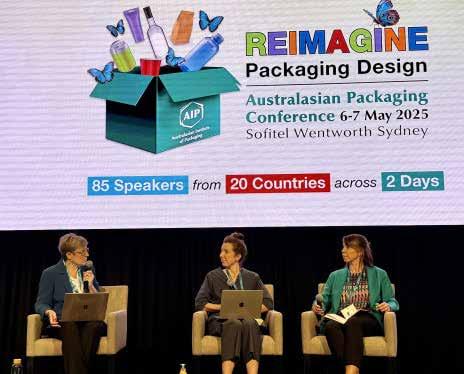
Dr Garofano opened the session with a look back at the collective aspirations expressed by delegates at the start of the conference. Key words from the opening word cloud – “recyclable”, “reuse”, “innovation”, and “collaboration” – set the tone for the days that followed, and were echoed in multiple sessions focused on design, data and the enabling power of technology. Reflecting on these themes, Corry addressed the value of AI in packaging design, noting that initial nervousness about automation displacing designers was gradually being replaced by appreciation of its benefits.
“AI can help us simulate structural designs, test usability and extractability, and accelerate iteration cycles,” she said. “In a world pushing towards circularity with urgency, this technology enables faster, smarter decisions.”
She stressed that smart packaging design must be grounded in data and lifecycle analysis. “We need to integrate systems thinking from the outset – ensuring recyclability and recoverability while also considering embedded environmental impacts. We have to avoid designing in unintended consequences.”
Cory also highlighted the importance of evidencebacked claims: “Transparency isn’t going away. We need data to validate what we’re saying – and to tell more impactful stories.”
The human factor in packaging
Chellingworth shifted the focus to human-centred design and behavioural insight, pointing out that consumers –better referred to as “people” – are central to packaging outcomes, whether through their purchasing choices or their interaction with pack formats.
“When I was head of waste at Aldi supermarkets, the first thing people said to me was, ‘Why is there so much plastic on fruit and veg?’,” she recalled. “That question reflects a broader consumer demand for circularity – even when they don't necessarily understand the depths and complexity of the issues.”
Chellingworth was particularly moved by sessions on packaging accessibility, noting the urgency of designing for people of varying abilities. “Those sessions were humbling,” she said. “As someone who is able-bodied, it was a wake-up call. Packaging should work for everyone.”
Corry agreed, and also challenged industry language, citing a reframing introduced by a speaker from Suntory. “They use the Japanese term Seikatsusha, meaning a person who lives life guided by values – not just a consumer. That mindset unlocks emotional connection and shifts how we design and communicate.”
Global perspectives and local solutions
Chellingworth brought home the value of the international lens at this conference, highlighting how the impact of packaging systems varies dramatically depending on local context.
“We saw examples of informal waste pickers overseas – often invisible but vital players in recovery systems,” she said. “In Australia, we’re fortunate to have a mature waste system, but we still need to think about how circular solutions can be tailored to remote and regional communities.”
Weighing in, Garofano applauded the ANZPAC Plastics Pact for its regional archetype model and pointed to her own work in the Pacific and South Asia, where scalable, culturally relevant packaging systems are critical.
Packaging’s role in reducing food waste Food waste was another major thread. Chellingworth underscored the link between packaging and waste prevention, citing innovations such as resealable meat packaging and portion guidance labels on pasta and bread.
“We waste enough food to fill the MCG ten times over every year, while many Australians remain food insecure,” she said. “Packaging plays a crucial role in helping food stay fresher for longer, in more useable quantities, and with clearer communication.”
She also flagged an upcoming national project focused on clarifying “use by” and “best before” dates, calling it “long overdue”.
Innovation and impact: Awards reflections
Reflecting on the PIDA awards that took place on night one of the conference, Corry pointed to standout examples such as Woolworths’ collaboration with Viscount Reuse on reusable e-commerce totes.
“These totes hit the mark on so many levels – durable, high recycled content, system-oriented – and made possible through partnership,” she said. “It really speaks to the ethos of collaboration.”
She also praised the Mars and Birdstone shelf-ready packaging redesign: “It’s a great example of using existing lines to develop one intuitive solution that performs across shelf, retail and logistics. Smart design doesn’t always need to be complex.”
Chellingworth was impressed by the Bunzl reusable food service container, developed to endure hundreds of reuses in high-volume settings. “It’s a brilliant solution for a really difficult challenge. These are the kinds of innovations we need more of – durable, purposeful, and genuinely scalable.”
All three panellists agreed that collaboration and patience are essential for meaningful progress. “Some great things happen fast,” said Garofano, “but others take years. We need patient action, cross-functional teamwork, and investment that supports long-term transformation.”
Chellingworth urged the industry to believe in the “unbelievable”. “Circularity challenges our linear habits,” she said. “What seems radical today might be essential tomorrow. We’ve already seen dramatic progress – let’s keep going.”
For Corry, the takeaway was the power of communication. “The outcome we need is often on the other side of someone else’s decision,” she said. “To reach them, we need to communicate with clarity, empathy and strategy.”
Each speaker made a final pledge: to keep translating across silos, to keep listening to lived experiences, to apply systems thinking, and to keep working – even with family members – to embed sustainability into daily life.
“The sense of momentum here is real,” said Garofano in closing. “Let’s keep this energy going. The path to circularity isn’t always easy – but it’s absolutely possible.”










Crafted with experience with an absolute knowingness of industry needs.


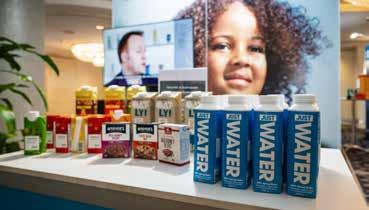


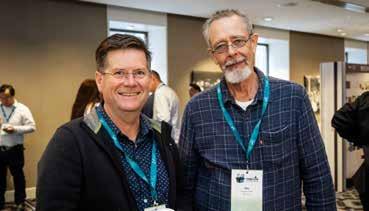

Product stewardship program, Simply Cups drives circular economy in communities.
PAK-PAVE™ Roads is Australia’s first road made with single-use coffee cups and other paper cups, and enjoyed by communities such as Penrith City Council
The lower carbon road has many functional and sustainability benefits:
Improved pavement durability and crack resistance
Improved wet weather skid resistance and reduced noise levels from surface texture
Less raw materials required




My 10 takeaways from Australasian Institute of Packaging (AIP) conference with Edward Whitehead
Congratulations to Nerida Kelton FAIP, and the AIP Australasian Institute of Packaging on delivering an exceptional event.
1) Global Perspective = Greater Market Reach = Let’s not Reinvent the Wheel
Global perspectives opened and closed the conference, with Pippa Corry Nicole T Garofano, PhD, AAIP Belinda Chellingworth (She/Her) setting out the global landscape and where we sit in it. They highlighted the need to adopt global best practice from both regulatory, design and recovery perspective. Rather than reinvent the wheel, we need to take proven systems and adapt them for Australia. Aligning with international standards not only strengthens domestic outcomes – it also ensures our packaging stays ‘trade-compatible’. Global regulations increasingly require traceability, authentication of origin, end of life outcomes and carbon footprint data. It’s clear we have some work to do to keep up!
Investment = Change
Downstream Investment and considerable commercial financial risk have already happened. Danial Gallagher and iQRenew have committed millions to bring the best technologies from around the world to build a worldclass soft plastics sorting and recycling facility. It’s producing ‘SPEC’ (Soft Plastics Engineered Commodity) material, meeting PCR demand in both domestic and international markets, and creating real off-take opportunities for downstream manufacturing. They’ve led the way, taken the risk, and delivered – and they want to do more. But this kind of action MUST be supported by robust regulation. Barry Cosier and the Soft Plastic Stewardship Australia will help to ensure a realisation of this investment, while at the same time securing further investment in the space.



Harmonised, forward-thinking, purposeful regulation is the unlock. It gives industry the confidence to invest, particularly in innovation - from material development to recycling tech. Clear policy direction reduces uncertainty and enables bold action. Regulation isn’t red tape - it’s the runway for smarter, cleaner, and more profitable solutions.
4) Downstream Infrastructure (Innovation) = No One Solution
The path forward isn't a silver bullet – it's a smart, connected system. Building downstream infrastructure that can handle a variety of materials and formats is essential. Aaron Rodman Vanessa Lenihan Viva Energy Australia , Jeroen Wassenaar , and Cleanaway Waste Management outlined viable innovative pathways for industry-first technologies at scale. Versatility is key, as no single solution will solve the problem. But by aligning innovative infrastructure with the right feedstocks, we can build a more effective, resilient recovery and recycling network.
5) Regulation = Supports Harmonisation
Clear, consistent national regulation is essential. It gives industry the confidence to optimise materials, streamline messaging and invest in circular outcomes. Without harmonisation, confusion reigns, but with it, we unlock progress. Clarity of direction cuts through the current paralysis within the industry and empowers stakeholders to act, please play on Murray Watt.
6) Revenue = Change
Australian Packaging Covenant Organisation (APCO) and Chris Foley have set out a pathway for revenue deployment, and while it’s a solid first step in the right direction, the consistent theme is that it’s not enough to drive the scale and the speed of change we need. APCO has a tough job balancing the commercial and political pressures of the day – I just hope they take the bold (and brave) step, pushing the limits of what’s possible to unlock real impact. Make sure you have your say before the consultation closed this Friday 16 May – https://apco.org.au/consultation.

Australia was a pioneer in tobacco advertising regulation, implementing significant bans in the 1970s and 1990s. While not the first globally, its comprehensive approach has influenced tobacco control policies worldwide.
7) Affirmative Action = Competitive advantage (it should)
When it comes to EPR and eco-modulation, the framework must reward the right behaviour. At the conference, I sensed some frustration from brand owners and packaging producers – not due to lack of willingness, but lack of meaningful incentives. If EPR fees are too low, they won’t drive change. The discount for good actors needs to be big enough to create a true commercial edge over those still choosing virgin materials over recycled content. Other countries are getting this right. The vibe was clear: brands want to lead, so let’s make it worth their while. Doing the right thing should be a competitive advantage!
8) Reduction = Reduces size of the problem
Reducing the physical mass of materials placed on market, reduces the size of the mountain we have to climb. We simply can’t keep up. Population growth alone adds 1M tonnes of waste over the next 10 years, assuming the same level of consumption. If the packaging waste problem sits at 7 million tonnes today, that’s a projected 14% increase – outpacing targeted gains in recovery and recycling, especially for plastics. While removal and reuse matter, reduction is something we can act on now.

Yes, infrastructure needs to catch up (and regulation needs to giddy up), but when it comes to packaging: less is best!
9) Material Reduction = Cost Reduction
Reduction isn’t just good for the planet – it should also be good for business. Using less material should reduce costs and increase yield and margin for manufacturers. Yes, innovation costs money, but if buyers push for what's possible rather than what's readily available, the economics can work. Splitting the margin to drive change is a win–win. When reduction delivers commercial value, producers will invest.
Data is key to compliance – and compliance reduces business risk. But beyond that, data helps us understand packaging from new angles. By decentralising and reformatting knowledge, we make it accessible to more people across the value chain. That accelerates change, improves risk management and opens up new opportunities for impact and cost reduction. @Phantm can help with this.
This year’s conference marked a subtle but important shift – with growing focus on downstream recovery, recycling, traceability and material identification. Designing for recovery remained front and centre, but the real challenge lies in how we harmonise efforts: how we define value, carve up waste, and decide what matters most.




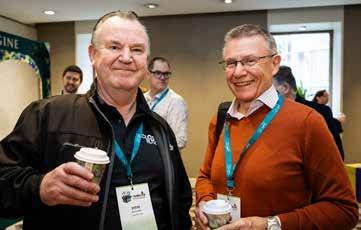
Australia’s Food and Beverage Accelerator’s Innovation Pathways Program provides data-driven insights about market opportunities and consumer needs and preferences.
We can access more than 23 databases and advanced AI to enhance decision making in your business.
FaBA provides access to state-of-the-art facilities, expert knowledge and non-dilutive funding (i.e. the recipient retains IP and does not give up equity in their company) to unlock innovation. faba.au/programs/innovation-pathways










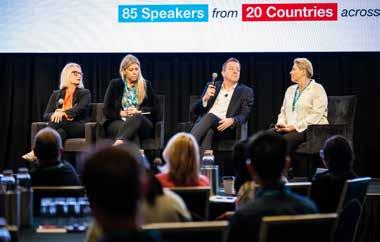

My brain is buzzing, notes are flying – this is how learning should feel.

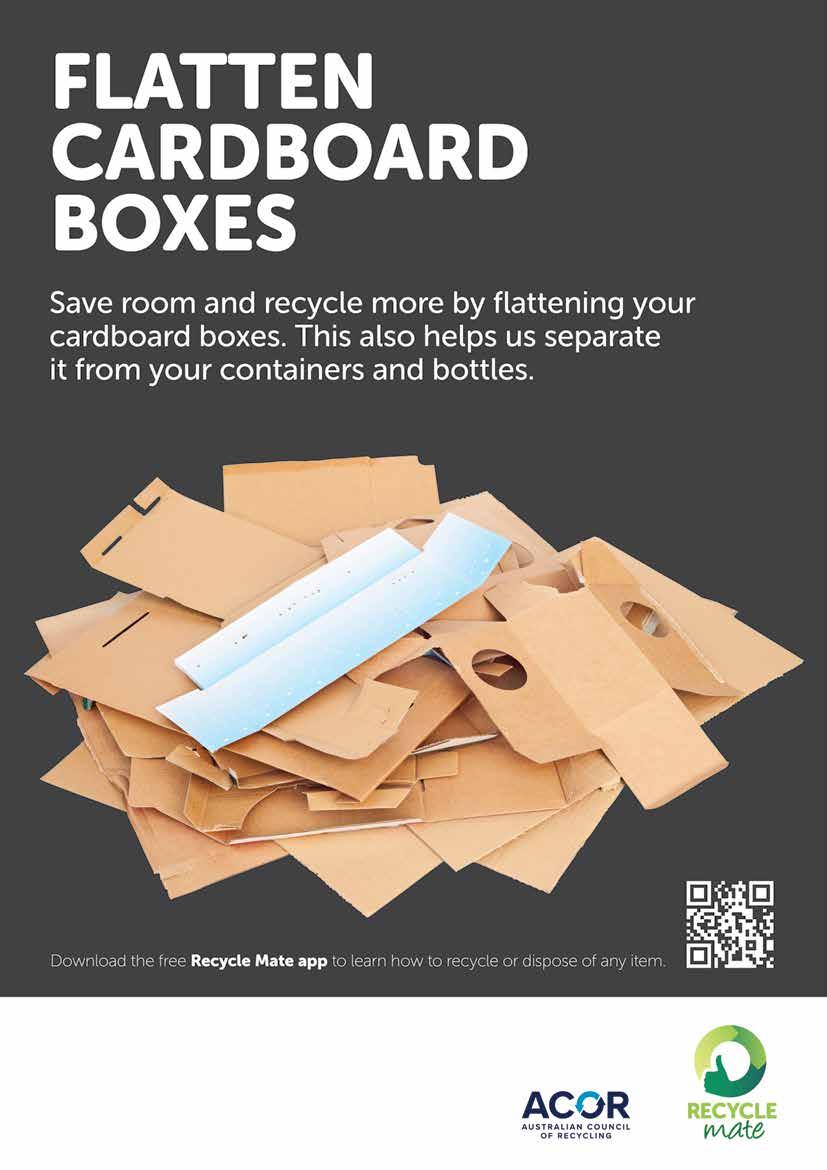




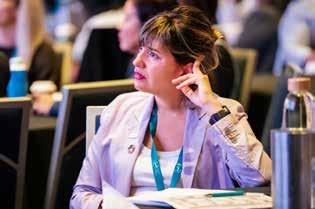
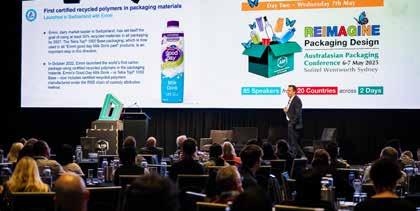
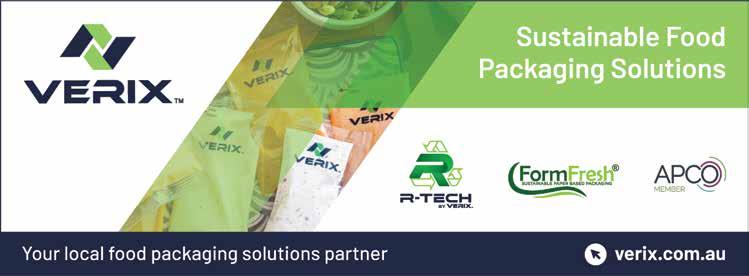
At the Australasian Packaging Conference earlier this month, Kate Baker, general manager, circular economy & sustainability at Visy, presented the company’s recent work to improve the sustainability of its glass packaging, with a focus on increasing recycled content, upgrading processing technology and reducing emissions.
Baker outlined Visy’s efforts to increase the average recycled content across its glass containers to 70 per cent, stating, “A Visy glass bottle with 70 per cent recycled content generates 30 per cent less emissions than one made from virgin materials.”
She noted that last year, Visy achieved an average of 64 per cent recycled content across all its plants, with some coloured glass bottles consistently reaching over 90 per cent recycled content in Sydney and Brisbane. Earlier this year, she noted, Visy's New Zealand facility celebrated hitting the 70% recycled content mark in 2024.
This improvement across all sites was supported by a multi-million dollar investment in recycling technology, including the installation of 20 optical sorters at its Laverton facility, capable of sorting glass down to three millimetres. “This allows us to obtain a clean stream of glass with fewer contaminants, enabling us to put more recycled content back into every bottle,” Baker said.
Baker went on to note that Visy opened Australia’s first oxy-fuel glass furnace in Sydney last year. “It uses half the energy of a conventional furnace and produces over 800 million glass containers annually,” she said. These furnaces are expected to cut greenhouse gas emissions by about 20-25 per cent.
Visy is also building two new oxy-fuel furnaces in Queensland, each projected to produce a billion bottles a year combined.
The company has also introduced pre-heat systems, which use waste heat to pre-heat recycled glass to 400°C before it enters the furnace, further boosting energy efficiency and reducing greenhouse gas emissions.
In terms of packaging design, Baker said Visy works closely with its customers to optimise glass containers for recyclability and material efficiency. “We offer lighter weight options and continue to reduce the weight of our containers. For example, our latest wine bottle ranges are down to 330 grams,” she said.

Despite progress, challenges remain in meeting recycled content targets for clear glass due to supply issues and technical limitations. “As you increase recycled content, slight colour variations can occur, which are easier to manage in green and amber glass but more difficult in clear bottles,” Baker explained. She concluded by reinforcing Visy’s commitment to local sourcing and collaboration across the supply chain, stating, “Every step we take sourcing smarter, designing better, collaborating more closely, brings us closer to a more sustainable future for glass packaging.”
Kate Baker is a finalist in the 2025 PKN Women in Packaging Sustainability Leader category.
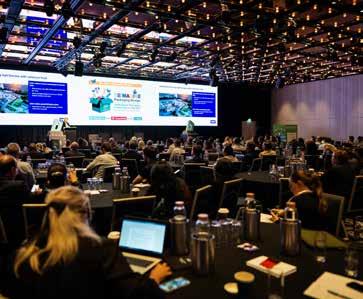
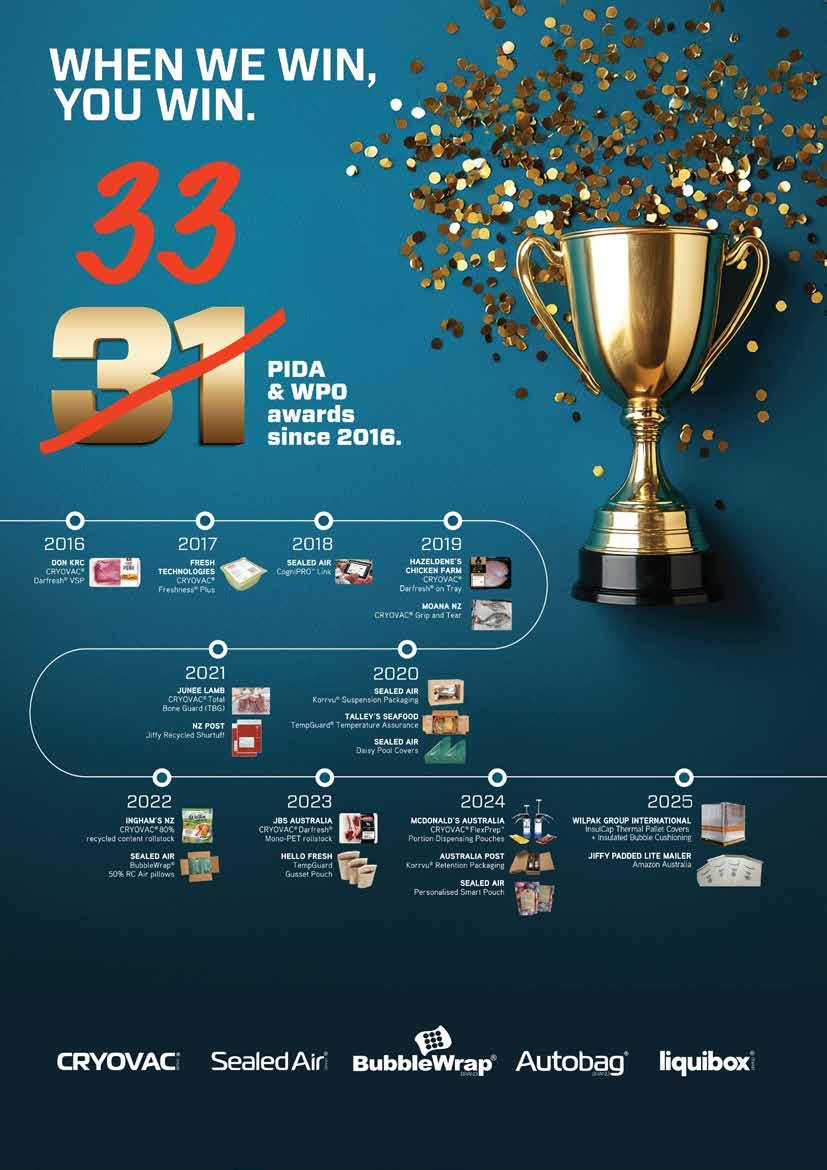



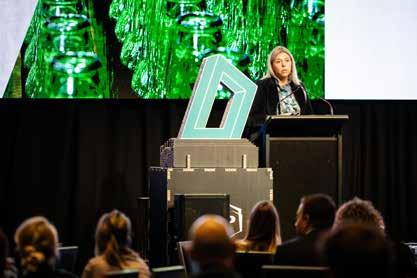






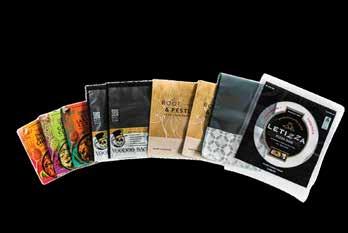

Welcome to the brand new LinkedIn page for the Australasian Institute of Packaging - AIP Share the news far & wide!




Don’t miss a beatfollow the AIP here for all the latest in packaging. The PIDA Awards are migrating to a NEW LinkedIn Page!

Welcome to the brand new LinkedIn page for the Australasian Packaging Innovation & Design (PIDA) Awards

Share the news far & wide!
Don’t miss a beatfollow the PIDA Awards here.




